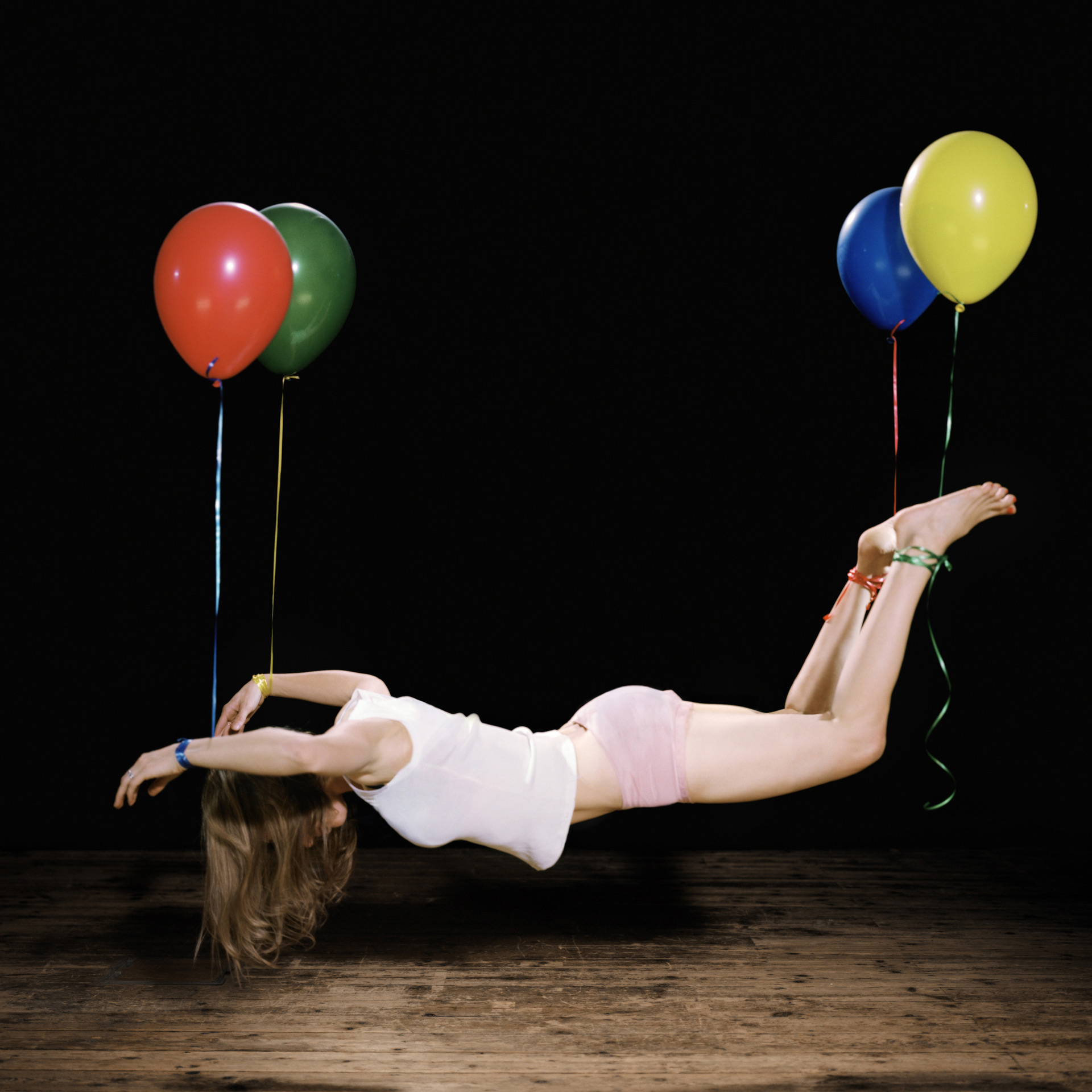
Archive, Archive Exhibitions, Exhibition
- April 4, 2009 – March 1, 2010
- Galleries
In 1967 Jackson Browne penned the lyric: “These days I seem to think about/ How all the changes came about my ways/ And I wonder if I’ll see another highway.” As the world shifts around us in ways that are profoundly disorienting, Browne’s song resonates. Bringing together six artists whose work is infused with that lyric’s sense of wonderment, and with the poetic and musical tradition of the elegy, These Days: Elegies for Modern Times responded to today’s changing world with installations, photographs, painting, sculpture, and video. The exhibition was at once an extended lamentation, but also full of a revelatory sense of possibility and hope, featuring work by George Bolster, Chris Doyle, Micah Silver, Robert Taplin, Sam Taylor-Wood, and Pawel Wojtasik. Two of the artists exhibited works from the previous year, while the other four created new installations specifically for the exhibition, including two room-size works: a 12′ tall, 36′ diameter video panorama and a full-size chapel-like environment.
George Bolster’s installation, Reckoner, transformed one of MASS MoCA’s galleries into a chapel for the 21st century. The centerpiece of Reckoner was an elaborately drawn ceiling panel depicting the Reckoning or return of Christ at the end of the world and the division of good and evil. Figures on the ceiling included martyred saints such as Joan of Arc who was burned at the stake and Matthias who was stoned to death. Suspended from the Apostles was a sculpture of a narwhal, which served as an allegory for Christ. Christ’s stigmata connected to the wounds of the apostles through red ribbons, symbolizing sacrifice and blood spilled at the apocalypse. The Radiohead song Reckoner, an atmospheric piece of music that seemed like a pleading at the end of time accompanied the installation. As they moved through the chapel, visitors experienced additional components of Bolster’s work; drops of water descended from the ceiling as each Saint wept for the loss of faith, not just in the form of religion but in the face of culture.
Chris Doyle’s animated video, Apocalypse Management (telling about being one being living), took inspiration from Mannerist and Renaissance frescoes of The Last Judgment, merging them with contemporary disaster imagery. The video began with a landscape and its inhabitants in the aftermath of a disaster like something out of a Hieronymus Bosch painting. The particular cause was unclear, but the devastation portended a state of emergency for which the viewer was reminded to be ready. Slowly a man beneath a fallen building started to move and then began singing. No words were discernible, but the song seemed to lift up the man allowing him to transcend struggle. Additional vignettes came to life, where the wounded, lost, and dying sang and danced their way out of destruction. By turning a site of hideous disaster into an almost operatic dance, Doyle provided hope in the lost, along with the belief that the end is not here. This elegy to disaster did have a bright side, for while it made palpable the impossibility of preparing for cataclysmic events, it endlessly strove for recovery.
Micah Silver’s The End of Safari began with Yves Saint Laurent, not in elegiac praise of the iconic fashion designer, but rather using his 1968 safari-style jacket as a launching point for an investigation into the realm of fantasy. Laurent’s safari jacket signaled a shift in the manifestation of cultural fantasy exposing colonialism in the form of fashion. Laurent highlighted artifice by openly acknowledging that he never visited the places that inspired him. The lineage of fantasy can be traced to travel writings of the 1500s in which authors imagined — rather than experienced — distant lands. Once uncovered, this fantasy fell apart, and it has been disappearing ever since. Silver’s installation began with an environment of synthetic trees and grass, a simulated “jungle” in which the story of fantasy unfolded in an elegiac libretto narrated by a fictional Yves Saint Laurent. Sound emanated from the room itself, like a type of ventriloquism. The result was a space that transported the viewer from the museum into a fabricated environment, addressing the conflicted loss of fantasy.
Robert Taplin’s Everything Real Is Imagined (After Dante) consisted of nine sculptures, each referencing scenes from Dante’s Inferno as modern allegories of political strife. Taplin’s story began as Dante’s does with the uncertain sense of whether or not we are in a dream or reality. Thus My Soul Which Was Still In Flight (The Dark Wood) depicted Dante, as a modern-day everyman, rising from bed to start his journey. As Talpin’s story unfolded, things became more complicated. The third canto of Dante’s Inferno brings Dante and Virgil to the River Acheron in order to cross into the First Circle of Hell. In Across The Dark Waters (The River Acheron), Taplin took this iconic scene and turned it into a metaphor for the refugee crisis, representing people trying to cross waters, unknowing, just like Dante, of what awaits them upon their arrival. Taplin’s cycle concluded with Dante mourning the fall of civilization; in We Went In Without a Fight (Through The Gates of Dis), Dante stood witness to a city destroyed, mourning both life on Earth and what may await down below.
Two videos by Sam Taylor-Wood were on view in These Days: A Little Death, which depicted a time-lapse tableau of a dead hare slowly rotting before our eye, and Prelude in Air, in which a lone cellist mournfully plays a Bach prelude. His instrument, however, has been erased, evoking a stark sense of loss. Selections from Taylor-Wood’s photographic series, Ghosts and After Dark, were also on view. In Ghosts, Taylor-Wood took on Emily Brontë’s Wuthering Heights by photographing the moors in Yorkshire, England, in the harshness of winter to speak of Brontë’s themes of thwarted love and suffering. After Dark depicted clowns in dilapidated post-industrial settings, creating a sense of misery and danger counter to the idea of joyous performance. And finally, in the self-portrait Escape Artist (Primary Colours), Taylor-Wood hovered above ground with a single colored balloon tied around each limb. Her body sagged in the middle showing the pull of gravity as she tries to achieve weightlessness. The act of floating here was not effortless, yet there was still a sense of belief in the ability of those party balloons to lift her up.
Below Sea Level comes from the tradition of cycloramas, or panoramic paintings spanning 360 degrees. In Pawel Wojtasik’s technological update, viewers entered the thirty-five-foot diameter, twelve-foot tall cylindrical structure, and, once inside, experienced a video panorama composed of a revolving, watery landscape with the skyline of the city of New Orleans in the distance. Below Sea Level engaged viewers in the contemplation of elements, natural and man-made, that have made New Orleans and the surrounding wetlands such an essential site. Wojtasik’s work emphasizes water as the lifeblood of the city, and uses its fluid properties to link video and sound, history and the present, the Mississippi Delta and our interventions in it. When experiencing this unique video, viewers were immersed as well in an all-pervading soundscape by artist Stephen Vitiello. From jazz to Mardi Gras, from the stillness of the Bayou to the hum of oil rigs along the Mississippi River, Below Sea Level was an intimate picture of a city that stands strong as a nexus of culture even when the waters threaten to sweep it away.
Download the exhibition brochure.
These Days: Elegies for Modern Times was supported by the Artist’s Resource Trust, a Fund of the Berkshire Taconic Community Foundation; Culture Ireland; and USG.
Sam Taylor-Wood, Escape Artist (Primary Colours), 2008
C-print

